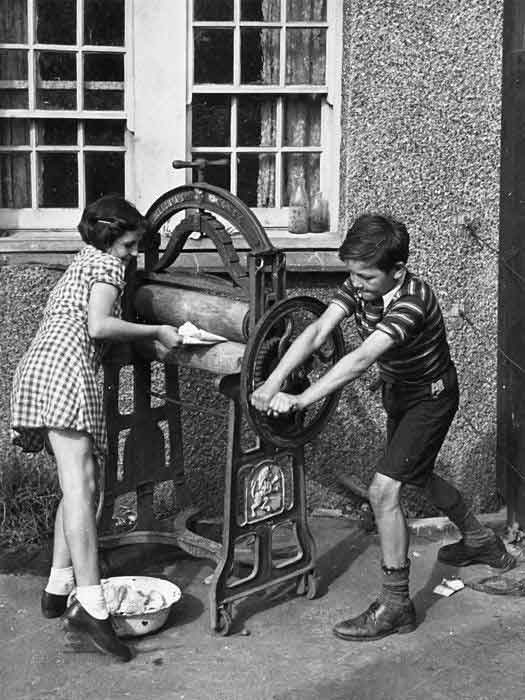One Motorhome, plenty of electrical toys. Two separate electrical systems to power them.
Mains Power
The first of the two systems is Mains Power, a 240/230v system much like we use at home. If your motorhome was made in the UK, it will probably have a couple of familiar three-pin sockets. A continental model might have mains powered two pin ‘foreign’ sockets. These sockets might power a kettle, a TV, a slow cooker, electric bike charging, a hair-dryer and in some big vans even a washing machine!
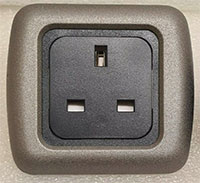
Why don’t my sockets work?
A common question from new owners on our forums asks why these sockets are not working, even though they have a fully charged battery? These sockets do not work directly from a battery, they need a source of mains power, so you need to be plugged into the mains, at home or on a campsite, for these sockets to work. Most vans have an orange, or sometimes blue cable to connect them to mains power.
There is a way to get mains like power to those sockets using battery power and an inverter, we’ll discuss that later.
Hooking Up
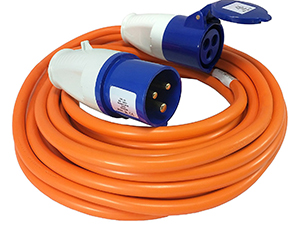
A couple of rules here to keep you safe. When hooking up, always plug the lead into your motorhome first. If you plug into the mains first, you’ll be wandering over to your van holding a live cable, while there is minimal risk in doing this, but it’s good practice not to. So plug into your van first, then hook up. Common sense then says, when you are leaving, remove the lead from the mains first.
Never hookup and leave lots of cable tightly wound around the cable-tidy. This is a serious fire risk. Always unroll all of your cable and lazy figure of 8 loop any spare cable. Because this is a pain to do, many people carry a spare short cable, say 6 metres, that will reach most hook up points most of the time, only unrolling the 25m cable when they need it.
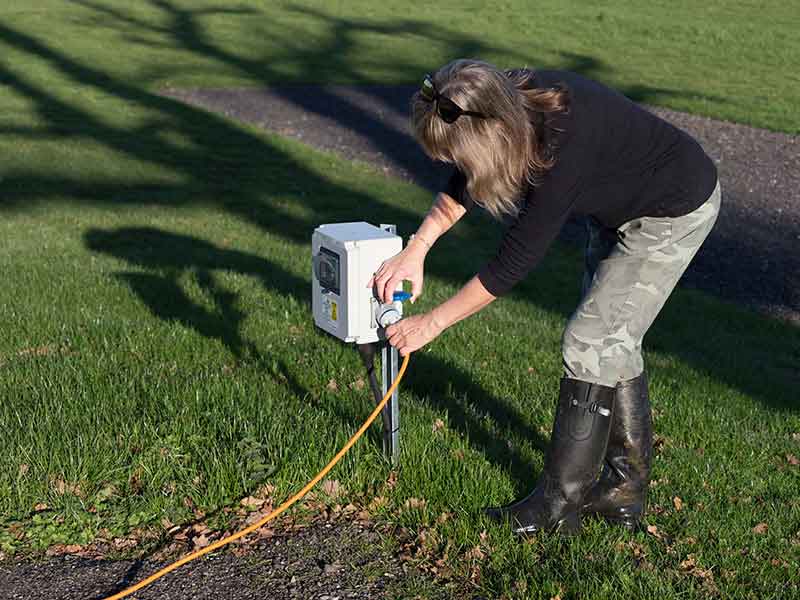
Hooked up means you can use sockets just like at home, but..
Even though you are hooked up to the mains, you don’t have unlimited power. The mains input may be restricted. The hook up post might deliver anything between 6 and 30 amps. If you have a 10 amp hookup, you will probably have to turn say the electric hot water heater off, before you switch the kettle on, otherwise, you’ll trip at the bollard and have to go out to reset it.
Worse still, you might trip it for other campsite users, worse again, Sod’s Law says when this happens, you’ll always be undressed and it will always be raining!
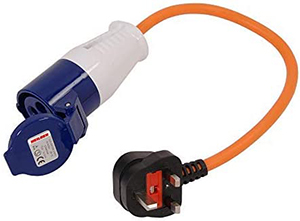
The second system in your motorhome is 12v
Much of the electricity you’ll use in your van will be 12v. This is stored in a battery or bank of batteries. These might be connected to your engine/starter battery; but they are completely separate systems in use. People distinguish between the two battery systems, calling one of them the engine or starter battery and the others are your leisure batteries.
It is the leisure batteries that make the TV and the taps work; they power the lights and charge your phone.
How long will my battery last?

This is a common question on the forum. Given the right information about precisely what appliances you are using; for how long, and at what temperature, etc. You could get a very accurate answer about how long they will last. But that is outside the scope of this article.
Suffice at this stage to sat that, generally speaking, if you use 12v appliances carefully and sparingly, say charging a laptop, some lights in the evening, an hour or so of TV, etc. Then a battery in summer should last at least a couple of days and two batteries twice that long.
How many batteries do I need?
If you are mostly camping on sites, with hook-up, then one battery will probably do. Most people have two. I once owned a motorhome that had seven! The more you have, the longer you can last between charges and the less reliant you are on finding proper campsite facilities. Try your style of camping out and see how long before you run out of power. Remember, you can double your power by adding another battery, if that is still not enough, there are options available to charge it without a hook up. Read on.
What type of Leisure Battery have I got?
There are different kinds of batteries, using differing technologies. Batteries are getting better and better. We won’t go into the specifics here. But even if you have the cheapest batteries installed, ones literally using Victorian technology, you’ll find that they may be all you need and will serve you well for many years.
You need to know where your batteries are located and if they require maintenance. (some do, most don’t) In your motorhome they might be under a seat, under the floor or in a locker. Find them, see if you can find out the make and if they require maintenance. While there, check that all connections to the terminals are tight with no movement at all.
Try to get by with 12v
I spend a lot of time touring from place to place, or I am on rally fields with no hook up. So, I try to do everything with 12v. These days, it’s easy to be exclusively 12v. My TV is 12v. For my laptop and camera, I use a 12v charger like this one
I have no need for a 240v system, but I don’t travel alone.
My wife requires more than 12v. She likes to use a mains hair dryer, and a small mains-powered vacuum cleaner. So, when I am not hooked up I need to make my batteries power these items and I do this with an inverter.
If you want to charge an electric bike, or need to power a CPAP machine, or you have a partner like mine who insists on a powerful hair-dryer! You will have to stay on sites with a hookup, or invest in an inverter.
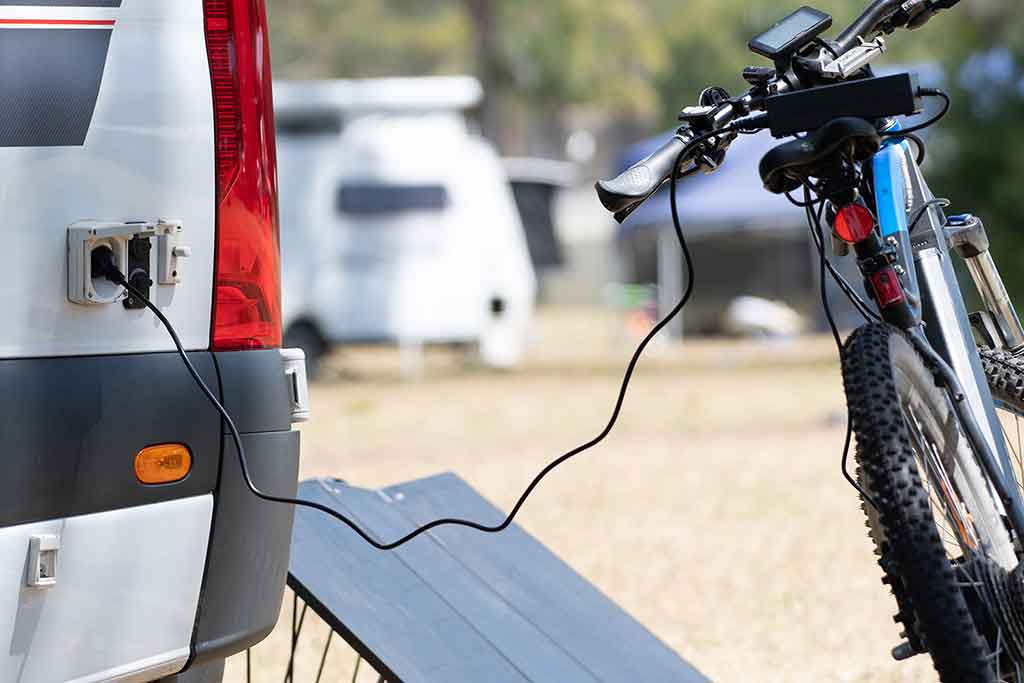
What is an Inverter?
In its simplest form, an inverter converts the power from the battery into mains power, so that the hair dryer will work using the mains plug socket. Or the socket built into the inverter. As you might imagine, an inverter can use up a lot of your battery power. It also uses some power even when nothing is plugged into it. So people who have inverters often have solar panels on their roof and/or a battery to battery charger fitted.
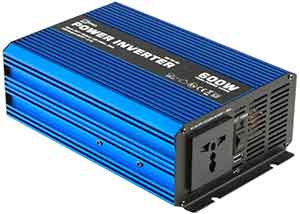
Solar
I’m sure you already know what a solar panel is. Motorhome owners install these on the motorhome roof, when the sun shines, their leisure battery gets a boost. A few have freestanding panels they aim at the sun. The annoying thing about solar panels is they don’t work at night, or on cloudy, rainy days or during the summer in Wales. 😉
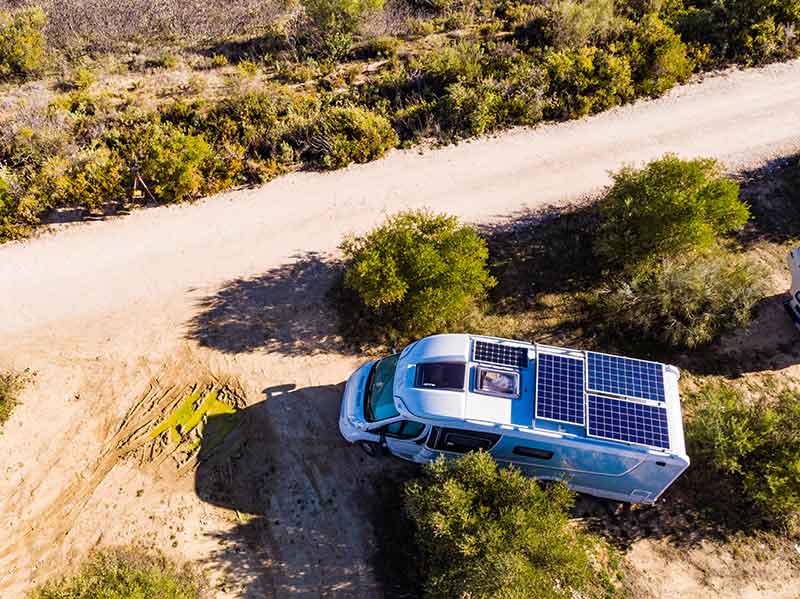
B2B (DC to DC) Charger
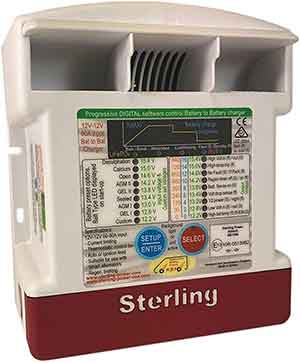
This is a clever bit of kit that can use your motorhome’s alternator to deliver a quick but perfectly shaped 4 stage charge to your leisure batteries while you are driving. After a drive to your camping spot, your batteries are ready to go again, fully charged.
A quiet word about generators.
Often, people new to motorhomes think a generator is a great backup tool. And it can be. Just like an old-fashioned mangle is still good at wringing out wet washing; generators are excellent at producing electricity. Yes, they have their uses, but normally only if you are isolated, with no neighbours. This is because of noise and exhaust fumes.
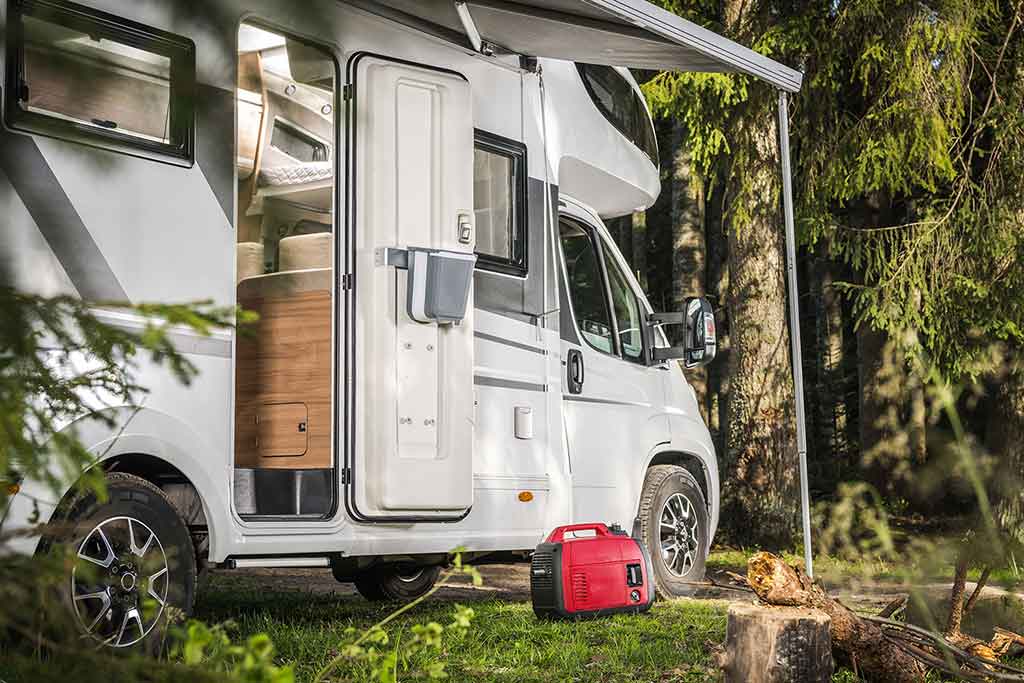
If you have no neighbours and little sun on your roof a genny is ideal.
There is no such thing as a quiet generator. They are noisy, smelly and not a good way to make friends, in fact, run one and your neighbours will probably hate you. Even the smallest are heavy machines that need careful storage, as does the fuel you’ll need to carry.
Twenty years ago if you had 100 vans on a rally field for three days, at least 50% would run a genny, and on day three 20% of those who didn’t own one would ask to plug into their neighbour’s!
10 years ago, it would still be 20% running one. Today that rally field will probably not have a single generator on it.
Better batteries, solar power and B2B systems have made the noisy, smelly, but ever so dependable, genny, as obsolete as the mangle.
